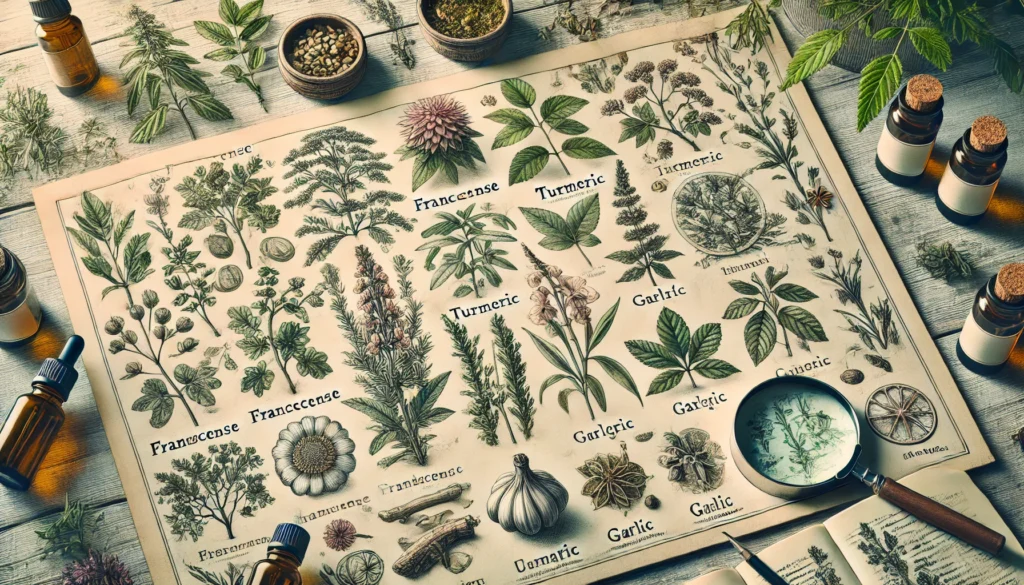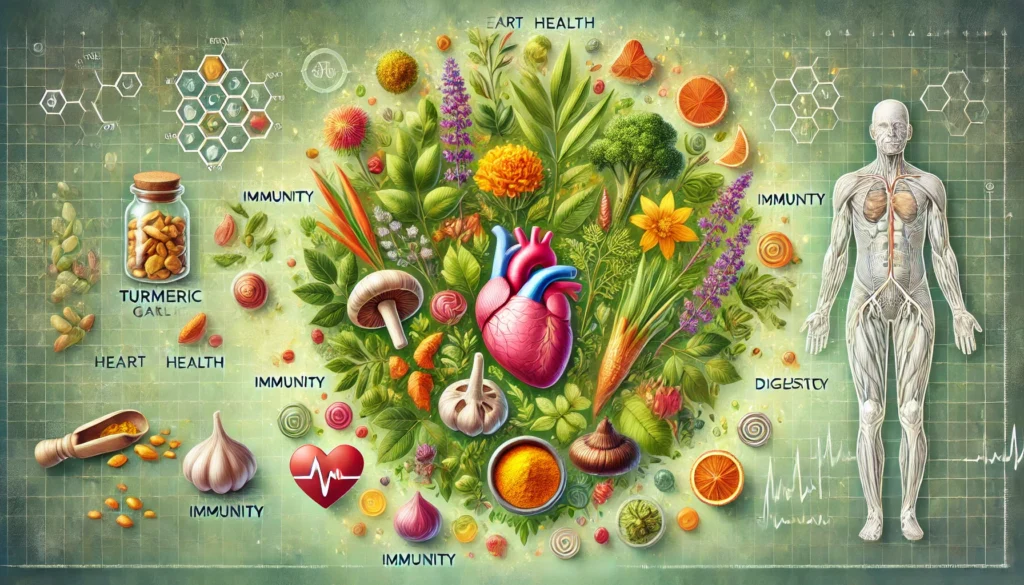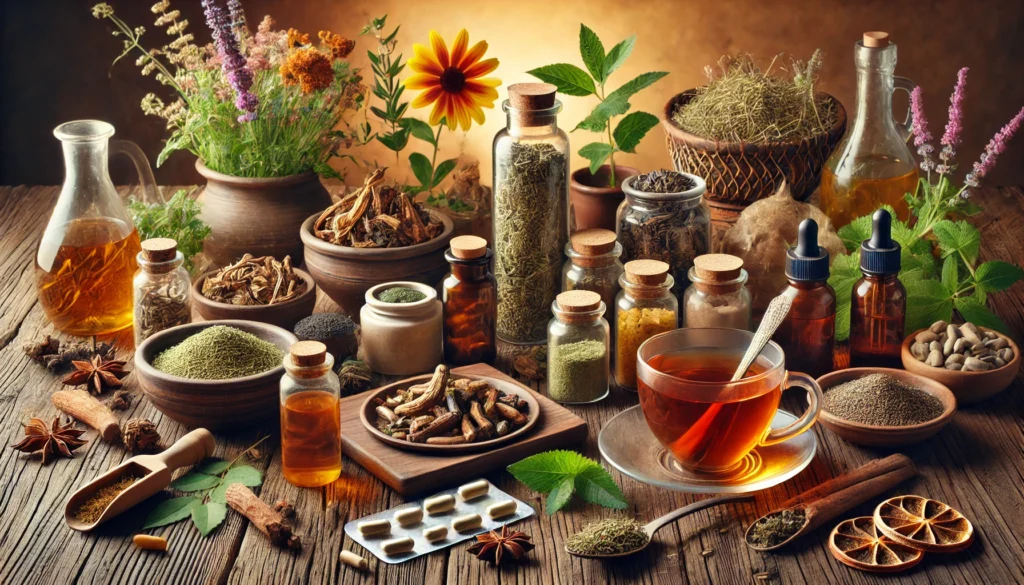Table of Contents
Echinacea: A Natural Powerhouse for Immunity and Wellness
Echinacea, often referred to as the “purple coneflower,” has been cherished for centuries as a natural remedy with potent health-boosting properties. Traditionally used by Native Americans, echinacea’s popularity surged as European settlers adopted it for its medicinal properties. Today, it remains one of the most trusted herbal remedies for boosting the immune system, fighting infections, and reducing the severity of colds and flu.
In this detailed exploration of echinacea, we’ll dive into its history, botanical profile, health benefits, and various ways to incorporate this powerful herb into your daily wellness routine. We’ll also cover important safety considerations and how to use it effectively.
This site contains affiliate links, and I may receive a commission on purchases made through them. Please see our Affiliate Disclosure for more details.

Historical Significance
Native American Use
Echinacea is native to North America, where it grows abundantly in prairies and open woodlands. It was first used by Native American tribes such as the Lakota, Cheyenne, Sioux, and others for its healing properties. These indigenous people valued echinacea as a remedy for wounds, infections, and snake bites. They would often chew on the roots or create poultices to apply directly to wounds and sores.
For centuries, echinacea was a cornerstone of Native American herbal medicine, praised for its ability to fight off infections and reduce inflammation. The root was the most commonly used part of the plant, but the leaves and flowers were also employed in various remedies. Echinacea was not only applied topically but also ingested to treat colds, coughs, and respiratory infections.
Introduction to Western Medicine
Echinacea was introduced to European settlers in the 18th century, who quickly embraced it for its medicinal qualities. By the late 19th century, echinacea had become a popular remedy in the United States, particularly in the form of tinctures and extracts used to treat infections and ailments like diphtheria, malaria, and blood poisoning.
In the early 20th century, echinacea’s popularity grew even further as it became a mainstay in Western herbal medicine. Before the advent of antibiotics, echinacea was commonly prescribed by physicians to treat bacterial infections and boost overall immune health. However, its use declined in the mid-20th century with the rise of synthetic antibiotics. It wasn’t until the 1970s that echinacea made a comeback, largely due to renewed interest in natural and holistic healing practices.
Modern Herbal Medicine
Today, echinacea is one of the most popular herbal supplements worldwide, particularly for immune support. It is widely available in various forms, including capsules, teas, tinctures, and topical creams. Echinacea’s resurgence is backed by modern research, which supports its ability to stimulate the immune system and reduce the severity of cold and flu symptoms. With its long history of use and growing body of scientific evidence, echinacea remains a powerful tool in natural medicine.

Botanical Profile
Plant Overview
Echinacea belongs to the daisy family (Asteraceae) and is native to North America. The most commonly recognized species used for medicinal purposes are Echinacea purpurea, Echinacea angustifolia, and Echinacea pallida. These species are collectively known as “coneflowers” due to their distinctive cone-shaped seed heads surrounded by vibrant petals, which range in color from deep purple to pink.
Echinacea purpurea, or the purple coneflower, is the most widely cultivated and studied species. It grows up to 3 to 4 feet tall, with large, daisy-like flowers that attract pollinators such as bees and butterflies. Its conical seed head protrudes from the center of the flower, which has petals that droop slightly, giving the plant its characteristic appearance.
Growing Conditions
Echinacea thrives in sunny, well-drained environments, and is often found in prairies and open fields across North America. The plant is highly resilient, able to withstand drought conditions and poor soil quality, making it a hardy addition to gardens. It typically blooms in mid-summer and can tolerate a variety of climates, from temperate to slightly arid.
Different Species
While Echinacea purpurea is the most common variety used in herbal medicine, Echinacea angustifolia and Echinacea pallida are also frequently used.
- Echinacea purpurea: Known for its broader medicinal properties, particularly its immune-boosting effects. It is the most studied species.
- Echinacea angustifolia: Traditionally used by Native Americans and valued for its strong ability to fight infections. It has a more bitter taste and contains high levels of alkamides, which are key immune-modulating compounds.
- Echinacea pallida: Used less frequently but still offers many of the same benefits, particularly for respiratory health and skin conditions.

Nutritional and Phytochemical Profile
Echinacea’s health benefits come primarily from its rich phytochemical composition. These compounds, found in the roots, leaves, and flowers, work together to boost immunity, reduce inflammation, and protect the body from oxidative stress.
Active Compounds
- Alkamides: These are the most studied compounds in echinacea, known for their immune-modulating effects. Alkamides stimulate the activity of white blood cells, enhancing the body’s ability to fight off infections. They also have anti-inflammatory properties, which make echinacea useful for treating inflammatory conditions.
- Chicoric Acid: Found predominantly in Echinacea purpurea, chicoric acid is a powerful antioxidant that helps protect the body from free radical damage. It also plays a role in stimulating immune response by increasing the production of certain white blood cells.
- Polysaccharides: These complex carbohydrates help enhance immune function by stimulating the activity of macrophages, a type of white blood cell that engulfs and destroys pathogens. Polysaccharides also contribute to echinacea’s anti-inflammatory properties.
Other Phytochemicals
Echinacea contains a variety of additional compounds that support its overall health benefits:
- Flavonoids: These antioxidants help protect the body from oxidative stress and support cardiovascular health.
- Glycoproteins: Important for immune support, these compounds help regulate the body’s immune response and improve resilience against infections.
- Essential Oils: Echinacea contains small amounts of essential oils, which contribute to its antimicrobial effects and help soothe respiratory conditions.

Health Benefits of Echinacea
Echinacea’s health benefits are primarily centered around immune support, but this herb also offers anti-inflammatory, antimicrobial, and antioxidant properties. Here are some of the key health benefits of echinacea, supported by both traditional use and modern research.
Immune System Support
Echinacea is best known for its ability to stimulate the immune system. By increasing the activity of white blood cells, particularly macrophages and lymphocytes, echinacea helps the body fight off infections more effectively. This makes echinacea especially useful during cold and flu season, when the immune system may need extra support.
Studies have shown that echinacea can enhance both innate and adaptive immunity, meaning it helps the body respond to infections quickly and develop long-term immunity over time.
Reduces the Duration of Colds
Echinacea is commonly used to shorten the duration and severity of cold and flu symptoms. Research suggests that taking echinacea at the first sign of a cold can help reduce symptoms like congestion, sore throat, and coughing. A study published in the journal Phytomedicine found that echinacea reduced the duration of colds by 1.4 days on average and lessened the severity of symptoms.
Anti-inflammatory Effects
Echinacea’s anti-inflammatory properties make it useful for treating a wide range of conditions, from arthritis to respiratory inflammation. The alkamides in echinacea help reduce the production of pro-inflammatory compounds, which can ease pain and swelling in joints and tissues. This makes echinacea a valuable remedy for chronic inflammatory conditions such as rheumatoid arthritis and irritable bowel syndrome (IBS).
Antiviral and Antibacterial Properties
Echinacea has been shown to possess both antiviral and antibacterial properties, making it effective at preventing and treating infections. Its ability to inhibit the replication of viruses, such as those responsible for the common cold and flu, makes it a popular choice for preventing respiratory infections. Additionally, echinacea’s antibacterial effects help prevent skin infections, respiratory tract infections, and even urinary tract infections (UTIs).
Wound Healing
The antimicrobial and anti-inflammatory properties of echinacea also make it an effective treatment for wounds, cuts, and burns. When applied topically, echinacea can help speed up the healing process, reduce the risk of infection, and promote tissue regeneration. Echinacea creams or salves are often used to treat eczema, psoriasis, and acne, where inflammation and bacterial infection are contributing factors.
Respiratory Health
Echinacea is commonly used to support respiratory health, particularly for conditions like bronchitis, sinusitis, and asthma. It helps reduce inflammation in the airways and fights off infections that contribute to respiratory congestion and irritation. Many people use echinacea as part of a natural remedy for colds and flu, as well as to soothe chronic respiratory conditions.
Antioxidant Power
Echinacea’s rich antioxidant profile helps protect the body from oxidative stress, which is a
major contributor to chronic diseases like heart disease, cancer, and diabetes. Antioxidants neutralize harmful free radicals in the body, reducing the risk of cell damage and promoting overall health. The combination of chicoric acid, flavonoids, and other antioxidant compounds in echinacea makes it a valuable addition to any wellness routine.
Mental Health and Mood
Emerging research suggests that echinacea may also have benefits for mental health, particularly in reducing anxiety. Some studies have found that certain compounds in echinacea can help regulate mood by interacting with brain receptors involved in stress response. While more research is needed, early studies are promising, suggesting that echinacea may offer natural support for anxiety and stress management.
Skin Health
Echinacea is increasingly being used in skincare products for its ability to treat skin conditions like acne, eczema, and psoriasis. Its antimicrobial and anti-inflammatory properties help reduce skin irritation and prevent infections that can worsen these conditions. Echinacea’s ability to promote wound healing also makes it beneficial for reducing scars and blemishes.
Detoxification
Echinacea has been used traditionally to support the body’s natural detoxification processes. It helps stimulate the lymphatic system, which plays a key role in removing toxins and waste from the body. By improving circulation and promoting the removal of toxins, echinacea helps cleanse the liver and kidneys, supporting overall detoxification.

Methods of Consumption
There are many ways to incorporate echinacea into your wellness routine, from teas and tinctures to capsules and creams. Here are some of the most popular methods of using echinacea:
Echinacea Tea
One of the simplest ways to enjoy the benefits of echinacea is by drinking it as a tea. Echinacea tea is typically made from the dried roots, leaves, or flowers of the plant. It has a mild, earthy flavor that can be enhanced by adding honey, ginger, or lemon. Drinking echinacea tea regularly, especially during cold and flu season, can help boost your immune system and ward off infections.
Echinacea Capsules and Tablets
For those looking for a more concentrated form of echinacea, capsules and tablets are a convenient option. These supplements are typically standardized to contain a specific amount of echinacea extract, ensuring consistent dosing. Capsules are a popular choice for daily immune support, especially for people who prefer not to brew tea or tinctures.
Echinacea Tinctures
Echinacea tinctures offer a fast-acting way to get the immune-boosting benefits of echinacea. Tinctures are made by soaking echinacea roots or flowers in alcohol or glycerin, extracting the plant’s active compounds. A few drops of tincture can be added to water or juice for quick absorption, especially when taken at the first sign of illness.
Echinacea in Skin Care
Echinacea is commonly used in topical creams, salves, and oils to treat skin conditions like acne, wounds, and rashes. These products can be applied directly to the skin to reduce inflammation, prevent infection, and promote healing. For those with sensitive or acne-prone skin, echinacea-based skincare products offer a natural alternative to harsh chemical treatments.
Fresh Echinacea
If you grow echinacea in your garden, you can use the fresh leaves, flowers, or roots to make homemade herbal remedies. Fresh echinacea can be brewed into teas, infused into oils, or used to create topical salves for wound healing and skin care.

Cautionary Advice
While echinacea is generally considered safe for most people, there are a few precautions to keep in mind:
Potential Allergic Reactions
People with allergies to plants in the Asteraceae family, such as ragweed, chrysanthemums, or marigolds, may also be allergic to echinacea. Symptoms of an allergic reaction may include itching, rash, swelling, or difficulty breathing. If you have a known allergy to these plants, it’s best to avoid echinacea or consult with a healthcare provider before use.
Autoimmune Conditions
Echinacea stimulates the immune system, which may be problematic for individuals with autoimmune diseases like lupus, multiple sclerosis, or rheumatoid arthritis. In these cases, boosting immune activity could potentially worsen the condition. If you have an autoimmune disorder, consult with a healthcare provider before using echinacea.
Medication Interactions
Echinacea may interact with certain medications, particularly immunosuppressants or drugs used to treat autoimmune diseases. It’s important to speak with a healthcare provider if you are taking any medications that affect the immune system.
Safe Dosage
For immune support, the recommended dosage of echinacea varies depending on the form. In general, 300–500 mg of echinacea extract per day is considered safe for most adults. For tinctures, 2.5 mL taken three times per day is a common dosage during cold and flu season.
Pregnancy and Nursing
There is limited research on the safety of echinacea during pregnancy and breastfeeding. While it is generally considered safe in moderate amounts, it’s best to consult a healthcare provider before using echinacea if you are pregnant or nursing.

Conclusion
Echinacea has a long history of use as a natural remedy for immune support, infection prevention, and inflammation reduction. Whether you’re using it to boost your immune system during cold and flu season or to treat skin conditions and promote wound healing, echinacea offers a wide range of health benefits backed by both traditional wisdom and modern research.
Incorporating echinacea into your daily health routine can be as simple as brewing a cup of tea, taking a capsule, or using a topical cream. As with any herbal remedy, it’s important to use echinacea responsibly and consult with a healthcare provider if you have any underlying health conditions or are taking medications. With its powerful immune-boosting properties and long-standing reputation in natural medicine, echinacea is a valuable addition to any wellness regimen.
